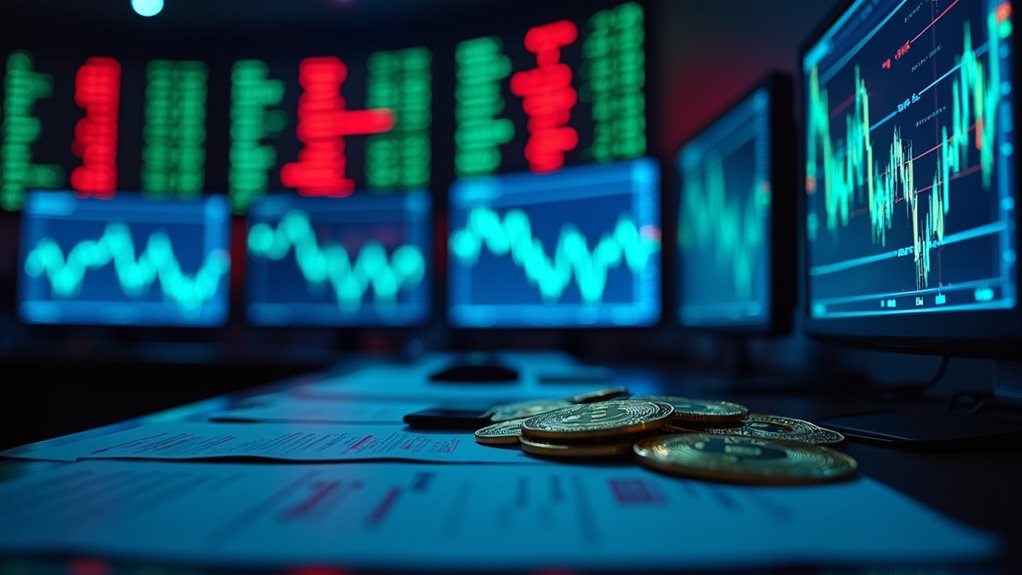Bitcoin’s volatility during trade wars has sparked heated debate about its safe-haven status. While showing moments of brilliance during crises like COVID-19, Bitcoin’s wild price swings make it more unpredictable than traditional safe havens like gold. Its fixed supply cap of 21 million offers inflation protection, but 30% drops from recent highs tell a different story. Bitcoin behaves more like a tech stock than a steady shelter. The cryptocurrency’s true role in finance remains an unfolding mystery worth watching.

While Bitcoin enthusiasts tout the cryptocurrency as digital gold, its reputation as a safe-haven asset remains shaky at best. The volatile digital currency has a peculiar way of zigging when it should zag, often leaving investors scratching their heads.
Sure, it’s shown moments of brilliance during economic uncertainty, but let’s be real – its wild price swings make traditional safe havens like gold look as steady as a rock. Research shows that Bitcoin’s transaction costs are significantly higher than those of traditional assets. The cryptocurrency’s fixed supply cap of 21 million makes it inherently resistant to inflation.
Speaking of gold, there’s a reason it’s been the go-to safe haven for centuries. It doesn’t throw temper tantrums like Bitcoin does when markets get spooked. During the COVID-19 pandemic, Bitcoin had its moments of glory, acting as a decent hedge. But then again, so did toilet paper. The cryptocurrency’s response to global events is about as predictable as a cat’s mood – sometimes it purrs, sometimes it scratches.
In certain markets, particularly China, Bitcoin has actually proven itself useful as a hedge against traditional investments. When stocks and bonds wobble, some investors run to Bitcoin like it’s the last lifeboat on the Titanic. The funny thing is, sometimes that strategy works. Recent market data shows Bitcoin dropping nearly 30% from recent highs amid escalating trade tensions.
But here’s the catch – Bitcoin behaves more like a tech stock on steroids than a traditional safe haven.
The broader cryptocurrency ecosystem has evolved, though. Stablecoins have emerged as the sensible cousins in the crypto family, offering a less dramatic alternative for risk-averse investors. They’re like the designated drivers at a wild crypto party.
Meanwhile, Bitcoin continues its identity crisis, switching between speculative asset and potential safe haven faster than you can say “blockchain.”
Looking ahead, Bitcoin’s role in the financial world is still taking shape. As global tariffs and trade wars rattle markets, some see Bitcoin’s volatility as a feature, not a bug. It’s like the rebel of the financial world – unpredictable but occasionally brilliant.
Whether it truly deserves safe-haven status remains to be seen, but one thing’s certain: Bitcoin isn’t going to start behaving like your grandmother’s gold coins anytime soon.









